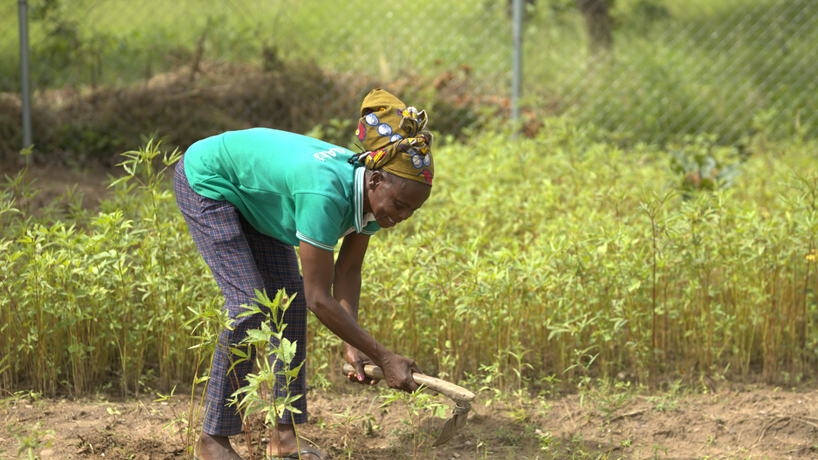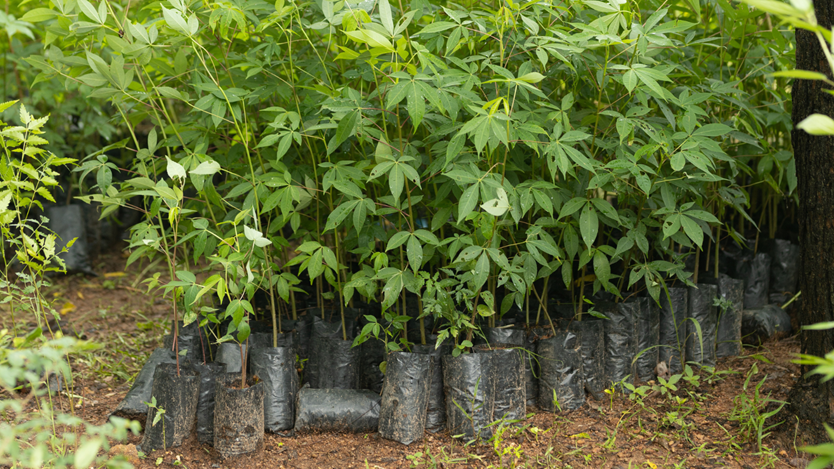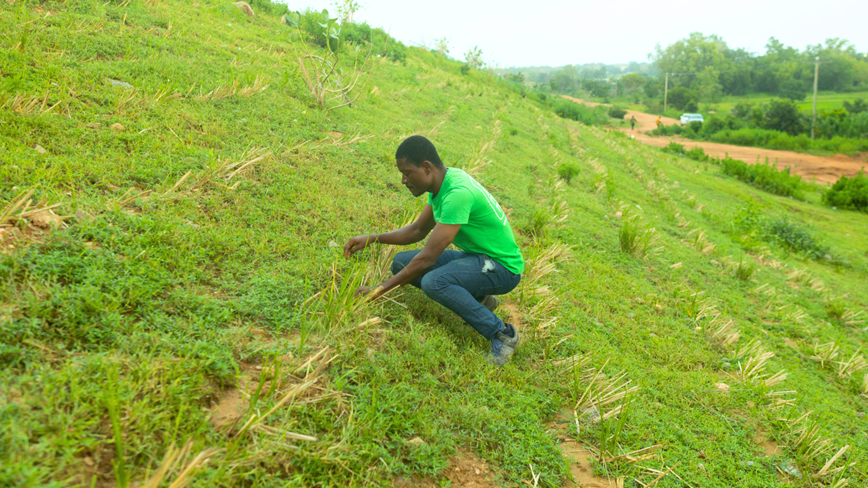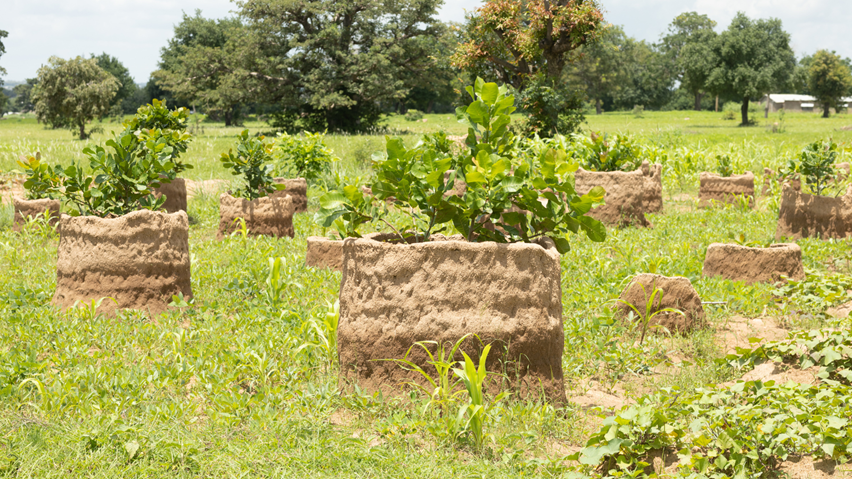
Top 10 Climate Crisis Terms Explained
31st January 2024Confused about all the different terms surrounding the climate crisis? You may be familiar with words like greenhouse gasses or fossil fuels, but when it comes to the fast-paced nature of the climate emergency and its politics, it can be difficult to follow exactly what’s happening. So, what is COP all about? And what exactly is a nature-based solution? Join us as we unravel the jargon and make sense of the urgent issues shaping our world.
Below is a closer look at the top 10 terms being used in the climate conversation, and what they mean:
1. Adaptation:

Adaptation is all about people making changes to the way they live, to help them cope with the effects of climate change.
On the frontlines of the climate crisis (like the Sahel region of Africa) communities are adapting their farming to meet higher temperatures and less rainfall. For example, they might do this by growing drought-resistant trees like moringa or baobab.
Other ways include using bushfire management techniques, to protect forests against wildfire.
2. Mitigation:
Mitigation in the context of climate change, refers to deliberate actions taken to stop too many greenhouse gasses from entering the Earth’s atmosphere.
This can be achieved by either reducing the source of the gasses (such as phasing out our burning of fossil fuels) or by increasing nature’s ability to store them (like protecting forests, oceans, and soil).
3. Carbon capture:

Carbon capture is when you capture excess carbon dioxide (C02) from the atmosphere by storing it in another form, like trees.
The trees will absorb the carbon and keep it in their leaves, putting oxygen back into the air as a byproduct. That’s why planting the right trees in the right places helps to reduce levels of carbon dioxide in the earth’s atmosphere.
Ethical carbon capture models such as Tree Aid's Tond Tenga project also help communities earn a financial share of the sale from carbon credits, bought from regreening the land they are the custodians of.
4. Carbon credits:
Carbon credits refer to a practice of measuring units of carbon (CO2) – usually 1 tonne of CO2 – which can then be traded on a global carbon market.
Although organisations still need to focus on lowering their emissions, some businesses are offsetting their carbon through carbon sequestration schemes, and can then sell their carbon credits to other organisations or governments.
While this can provide huge benefits for the environment, offsetting should be seen as a necessity for emissions that can't be avoided and should go alongside reducing emissions in the first place.
In our Tond Tenga project, the sale of the carbon credits will generate income for the communities who are doing the work planting and growing the trees.
5. Loss and damage:

Loss and damage refers to damage caused by extreme weather events, which are made worse by the climate crisis. Damage can range from things like flooding to wildfires and drought.
To address this, global agreements set up the ‘Loss and Damage’ fund, which aims to financially support countries taking the hardest hits, covering the costs of the damages caused by climate change disasters.
Countries have been meeting at COP to discuss and agree an amount of money that will be paid to lower-income countries at risk of the worst effects, including the Sahel region of Africa. This fund will help support communities facing harm that can't be undone, from the effects of the climate emergency.
6. COP meetings:
COP (meaning Conference of the Parties) are annual gatherings where representatives from countries that are part of the United Nations Framework Convention on Climate Change (UNFCCC) meet to talk about and decide on efforts to tackle climate change.
The goal is to see how much progress is being made, come up with agreements, and decide on actions to limit global warming. You may have heard them referred to as ‘COP’ followed by a number, such as the most recent one: ‘COP28.’ These numbers simply refer to how many there have been. For example, COP28 was the 28th meeting (read our reaction to it here). The next COP will be COP29 and is set to take place in Azerbaijan.
7. Restoration:

In the context of climate change, restoration means the process of repairing ecosystems, landscapes, or natural habitats that have been degraded, damaged, or lost.
This can involve activities like reforestation, afforestation, restoring forest areas, and using sustainable land management practices. All of Tree Aid’s projects involve a combination of these techniques. Find out more about our approach here.
8. The IPCC:
In a nutshell, the Intergovernmental Panel on Climate Change (IPCC) is a scientific body established by the United Nations in 1988.
Its goal is to provide a detailed report on the current state of climate change, including its effects.
This research and reporting is carried out by thousands of scientists and experts from across the globe, who all contribute on a voluntary basis. The most recent IPCC report was published in March 2023. Read our reaction to it here.
9. Nature-based solutions:

Simply put, a nature-based solution is a way of using nature to tackle environmental issues, like climate change. It involves using natural things like forests or oceans, to help tackle the effects of the changing climate.
For example, our regreening projects work with communities to grow trees in areas where the land has become degraded. The natural process of growing trees helps to tackle the negative effects of climate change, such as loss of soil fertility.
The goal is to build resilience and promote well-being in both people and the natural world.
10. 'Climate crisis' vs. 'climate change'
Both of these terms refer to the changes to Earth’s climate, brought about by the burning of fossil fuels.
While they both mean the same thing, some people and organisations now prefer to use ‘climate crisis’ because it better emphasises the urgency of the situation and encourages action to address what's happening.
And there you have it: our top 10 climate jargon words explained.
Have we missed anything? If there's any more terms or myth-busting you'd like to know about, get in touch with your requests.
Want to know more about how we are tackling the climate crisis? Click here!